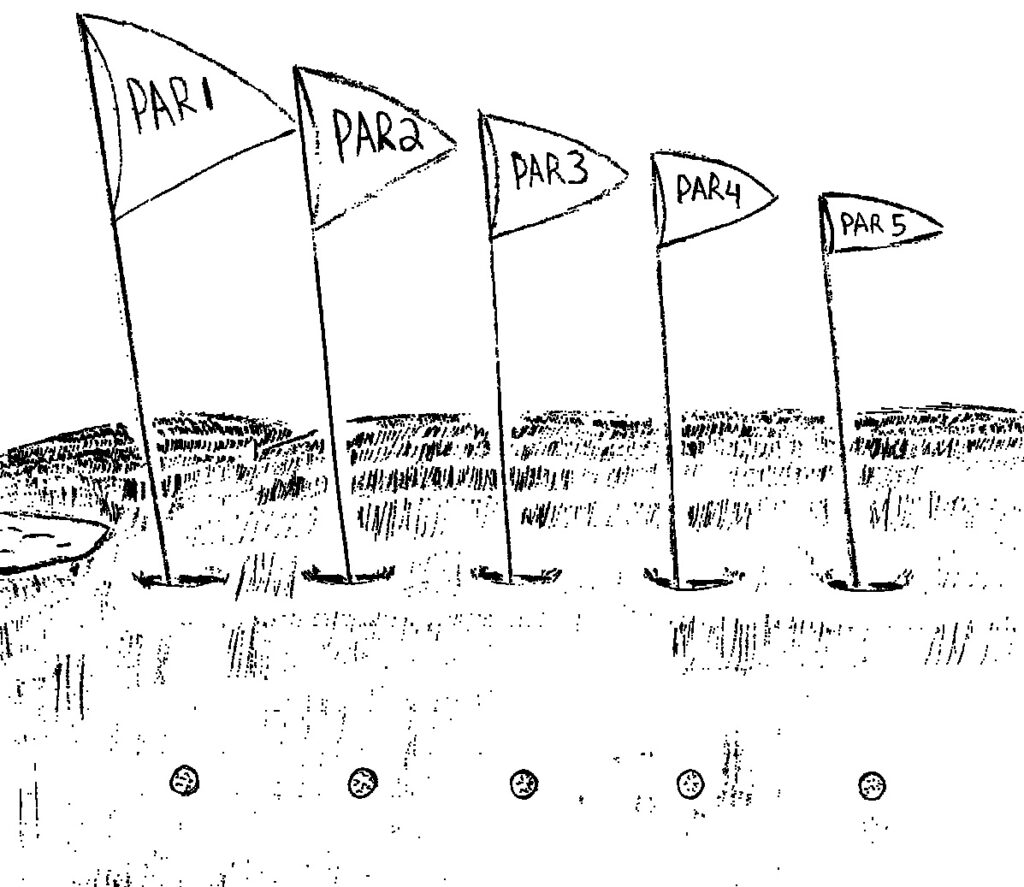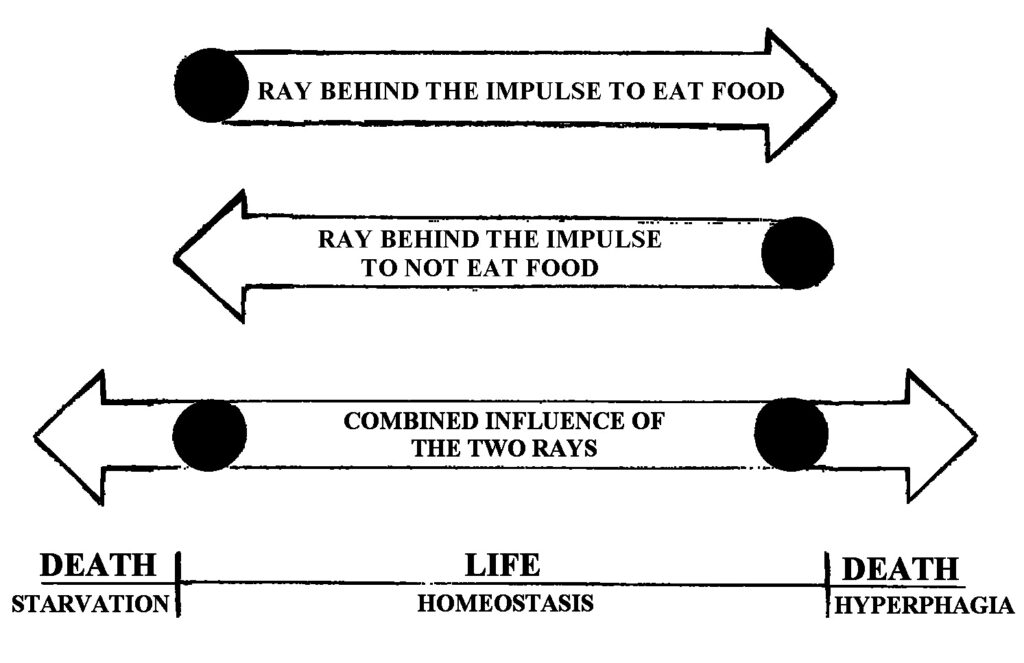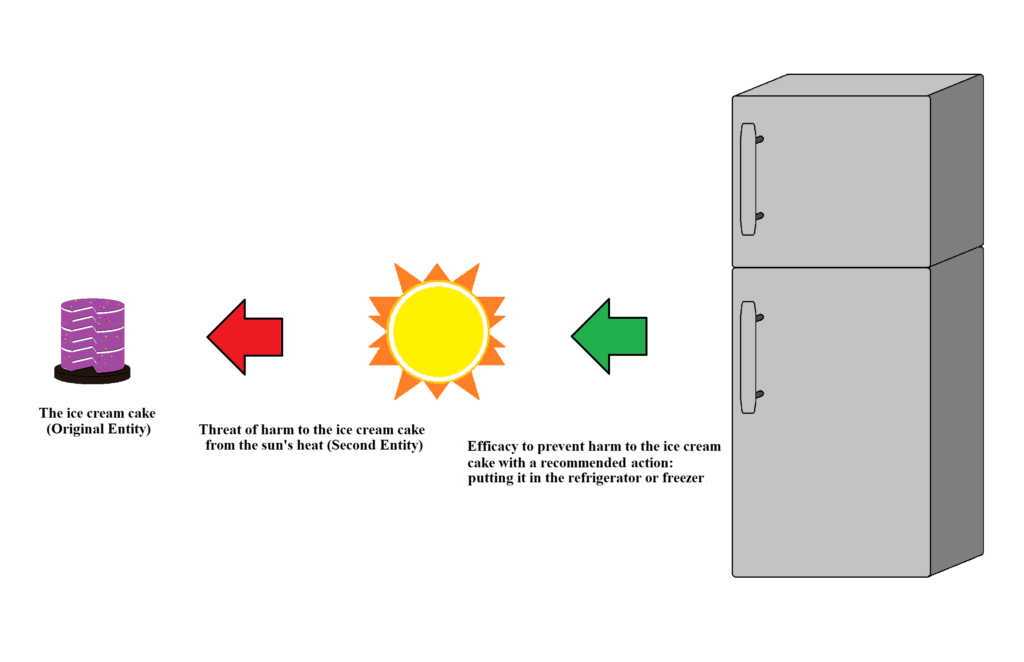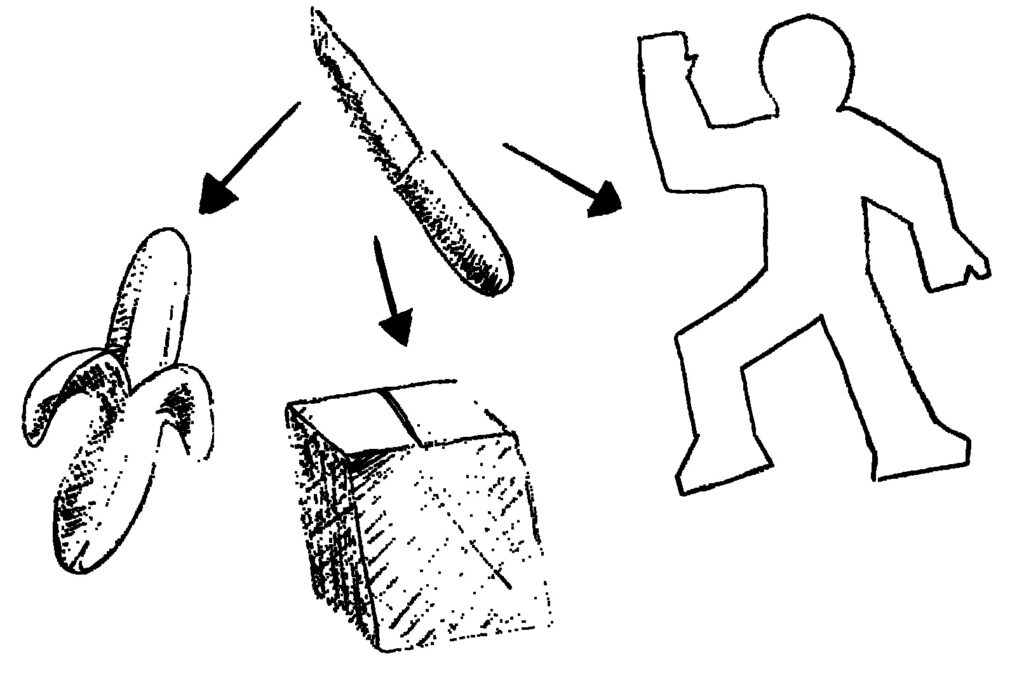Cognitive Appraisals in the Context of Affect Engineering
This is the third article in a series designed for the layperson that will explain the basics of Affect Engineering as a theory of emotions. Each article will begin with a list of questions that it will aim to address. The sections that follow will be in two parts each. The first part will be a short statement that answers each question as succinctly as possible. The second part will either be an explanation that goes into more detail where needed or explain some of the implications of the short answer.
QUESTIONS
- What is a cognitive appraisal towards the restoration of equilibrium between a purpose and its complementary purpose in Affect Engineering?
- What are Positive Anxiety and Negative Anxiety in Affect Engineering?
- Why are there two sets of functions in Affect Engineering?
- What happens when equilibrium between a purpose and its complementary purpose are not sought, and when might this occur?
What is a cognitive appraisal towards the restoration of equilibrium between a purpose and its complementary purpose in Affect Engineering?
SHORT ANSWER
A cognitive appraisal, or Appraisal for short, in Affect Engineering concerns whether the acquisition of an entity is deemed to lead towards balancing the success to failure rate between fulfilling a purpose versus fulfilling its complementary purpose (i.e., two opposing goals), bringing it closer to the ideal for the individual, or towards unbalancing the success to failure rate between the purpose and its complementary purpose.
IN DEPTH EXPLANATION
The survival related need to assess whether or not objects and events in an environment will help or hinder the individual’s effort to balance the fulfillment of opposing objectives is what Appraisals address in Affect Engineering’s framework. If, for example, a glass of water is considered by an individual for the fulfillment of the purpose of hydrating versus not hydrating or dehydrating, then there are two things that are taken into consideration in Affect Engineering.
First, the glass of water is given a valuation by the individual for both the purpose of hydrating and also for the purpose of not hydrating (i.e., dehydrating). This upholds the 1:1:1:1 Ratio established in the second article of this series. In most cases, the individual would recognize (i.e., from past learning) that the glass of water is more valuable for helping the individual to hydrate if it is consumed than it is for helping the individual to not hydrate if consumed. For instance, based upon the glass of water’s Sufficiency for the fulfillment of the purpose of not hydrating, at bare minimum another entity would be required for the glass of water to be sufficient for dehydrating, (e.g., heat to vaporize it). The two valuations of the glass of water by the individual are separate because they are for two different and opposing purposes. An individual who has learned that water alleviates thirst would be expected to give the glass of water a higher valuation for the purpose of hydrating, while giving the glass a water a valuation closer to its existential value (i.e., base valuation for existing) for the purpose of not hydrating.
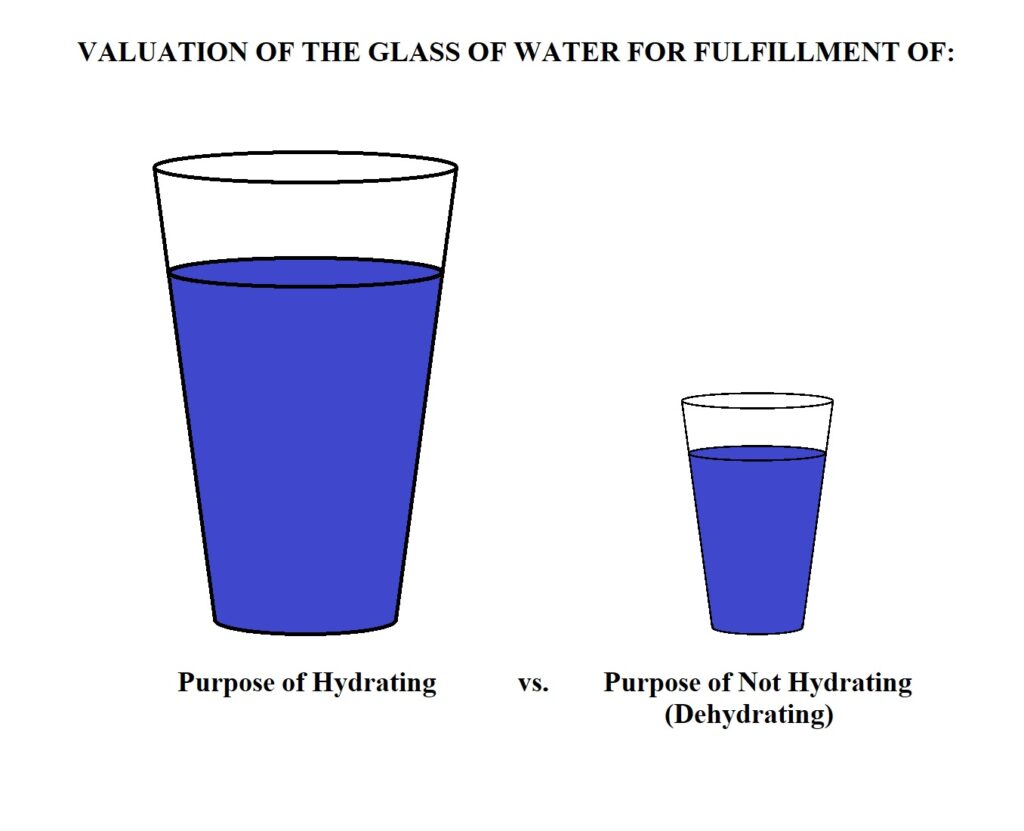
The individual’s valuation of the glass of water will tend to be larger for the purpose of hydrating (LEFT) than for the purpose of not hydrating (RIGHT). Subsequently, the emotion felt for the former will be given more weight by the individual, while the latter’s influence would be offset completely, but is nonetheless present.
Secondly, the individual’s current state of being and where it is relative to their ideal success-to-failure rate for the two purposes (e.g., striking a balance or maintaining homeostasis) will need to be determined. If the individual is very thirsty, then the glass of water’s acquisition would be expected to lead towards a restoration of equilibrium. As stated in the previous paragraph and image, the glass of water would still have a valuation for the purpose of not hydrating (dehydrating), but this valuation would be dwarfed and offset by the valuation of the glass of water for the fulfillment of the purpose of hydrating. This would persist as long as the individual considers water to be more useful for hydrating than dehydrating oneself.
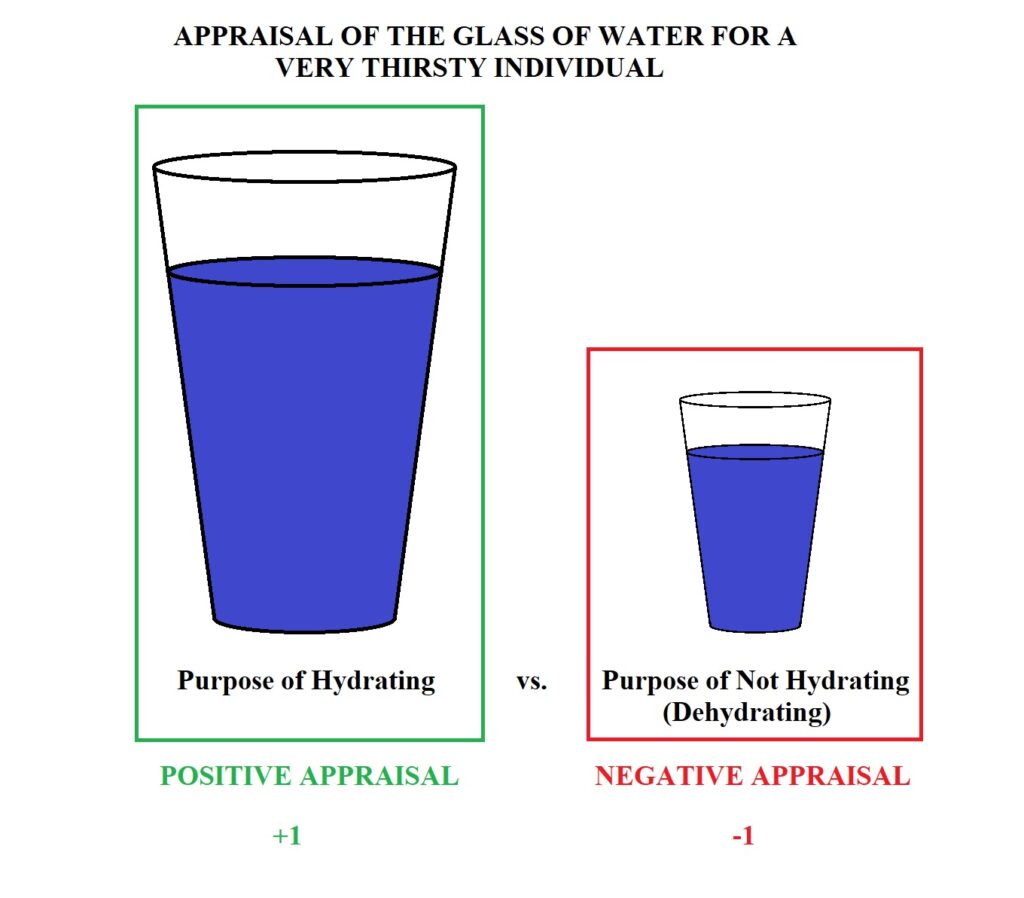
For a very thirsty individual, the individual would be expected to give the glass of water a positive Appraisal towards the restoration of equilibrium (larger value to far left) and a coefficient of +1.
The smaller valuation (on the right), for the purpose of not hydrating, would be given a negative Appraisal towards the restoration of equilibrium, and a coefficient of -1.
Alternatively, if the individual was overly hydrated with liquid already, to the point that consuming more water would lead away from equilibrium, then the Appraisals would flip. The glass of water would be given a negative Appraisal for the fulfillment of the purpose of hydrating, as drinking the water would lead to the individual feeling waterlogged and move them away from equilibrium/homeostasis. For the complementary purpose of not hydrating, the glass of water would have a positive Appraisal, as dehydrating oneself in this case would lead towards a restoration of equilibrium between the purpose and complementary purpose.
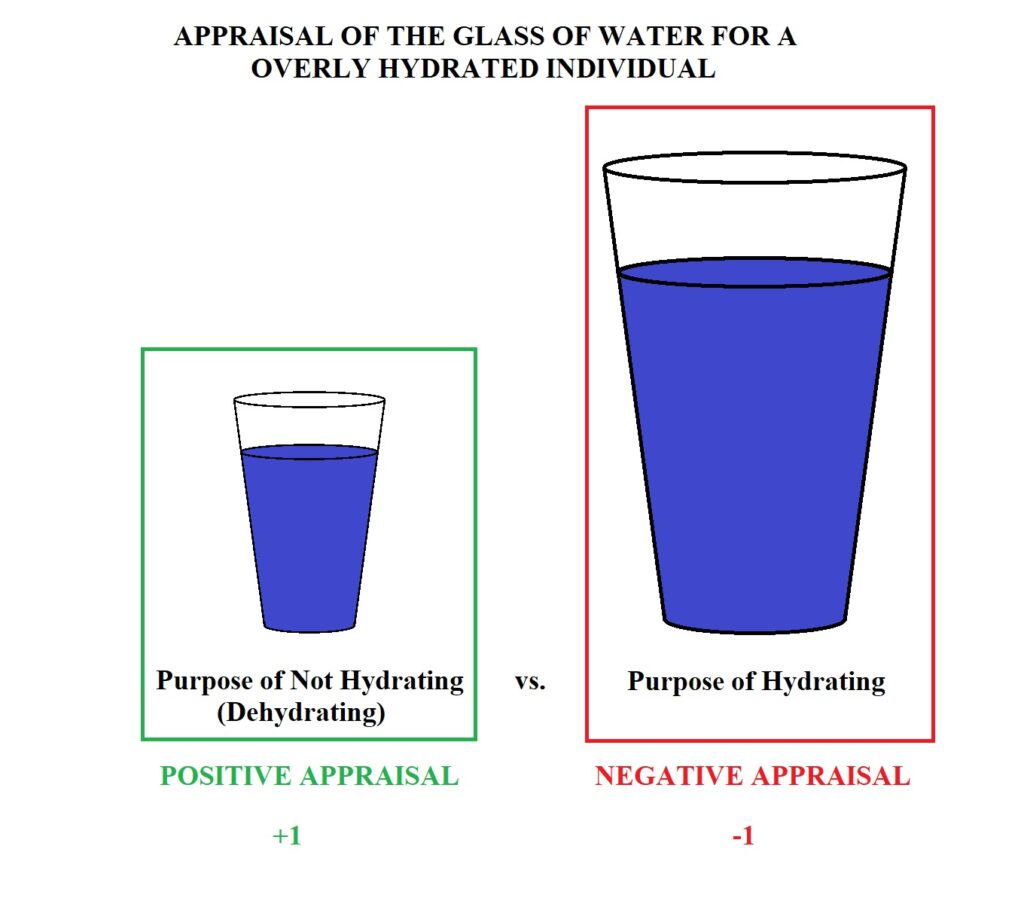
For an overly hydrated individual, the individual would be expected to give the glass of water a negative Appraisal towards the restoration of equilibrium (larger value on the right) and a coefficient of -1.
The smaller valuation (far left), for the purpose of not hydrating, would be given a positive Appraisal towards the restoration of equilibrium, and a coefficient of +1.
Appraisals are incorporated into Affect Engineering as a discrete variable (equaling +1 or -1), and their use means that Anxiety is of two types in its framework: Positive Anxiety and Negative Anxiety). Positive Anxiety, in this case, means the Anxiety invested in an entity has a positive Appraisal, and the individual expects that fulfillment of the purpose in consideration will lead towards restoring equilibrium or balancing fulfillment of the purpose against fulfillment of its complementary purpose (i.e., opposing purpose).
Negative Anxiety is in contrast to this, and means the Anxiety invested in an entity has a negative Appraisal; the individual expects that fulfillment of the purpose in consideration will lead away from restoring equilibrium, and will unbalance fulfillment of the purpose against fulfillment of its complementary purpose (i.e., opposing purpose).
To summarize, in Affect Engineering Appraisals concern the individual’s assessment of whether or not fulfilling the purpose at hand will lead towards its fulfillment being balanced or unbalanced against fulfillment of its opposing purpose. What makes Appraisals somewhat tricky to grasp in Affect Engineering’s framework is the notion that an entity or object is always considered to be valuable both for doing and not doing the same action, but to different degrees (e.g., water cannot be highly useful for both hydrating and dehydrating oneself). This is necessary to adhere to its 1:1:1:1 Ratio. On another note, Primary Appraisals (e.g., concerning evaluations and threats or harm) and Secondary Appraisals (e.g., concerning efficacy and coping mechanisms) as proposed by Richard S. Lazarus, are incorporated in a different manner as separate variables within Affect Engineering’s framework, as mentioned in the second article of this series, and they will be examined in more depth later in this series as other variables and concepts are introduced.
What are Positive Anxiety and Negative Anxiety in Affect Engineering?
SHORT ANSWER
Positive Anxiety in Affect Engineering concerns increases and decreases to negative affect with respect to a single purpose for the individual. Negative Anxiety in Affect Engineering concerns increases and decreases to positive affect with respect to a single purpose for the individual.
IN DEPTH EXPLANATION
Due to Affect Engineering’s adherence to its 1:1:1:1 ratio as a principle, Positive Anxiety and Negative Anxiety are concerned with different types of affect.
Positive Anxiety in Affect Engineering is concerned with increases and reductions to negative affect (e.g., generally corresponding to negative feelings and emotions). In the case of Positive Anxiety, positive here is in reference to whether fulfillment of the purpose will lead towards a restoration of equilibrium between the purpose at hand and its complementary purpose (i.e., yes, for the purpose at hand in this case).
In contrast, Negative Anxiety in Affect Engineering is concerned with increases and reductions to positive affect (e.g., generally corresponding to positive feelings and emotions). In the case of Negative Anxiety, negative here is in reference to whether fulfillment of the purpose will lead towards a restoration of equilibrium between the purpose at hand and its complementary purpose (i.e., no, for the purpose at hand in this case).
The example of the glass of water being valued by an individual for the purpose of hydrating will be considered again. For an individual who is extremely thirsty, any threat of harm to the glass of water (e.g., a rival who wants to drink it first) would be expected to raise the individual’s investment of Positive Anxiety into it for the purpose of hydrating, and subsequently raise negative affect felt if they are unable to procure the glass of water, especially if no other water sources are available nearby. If, however, the individual is able to acquire the glass of water despite the threat of harm, a reduction in the Positive Anxiety invested into it for the purpose of hydrating would be expected, as well as a reduction in negative affect felt. Both of these valuations of the glass of water would be for the specific purpose at hand, hydrating, as its value for the complementary purpose (i.e., not hydrating), would be smaller and negligible due to being offset.
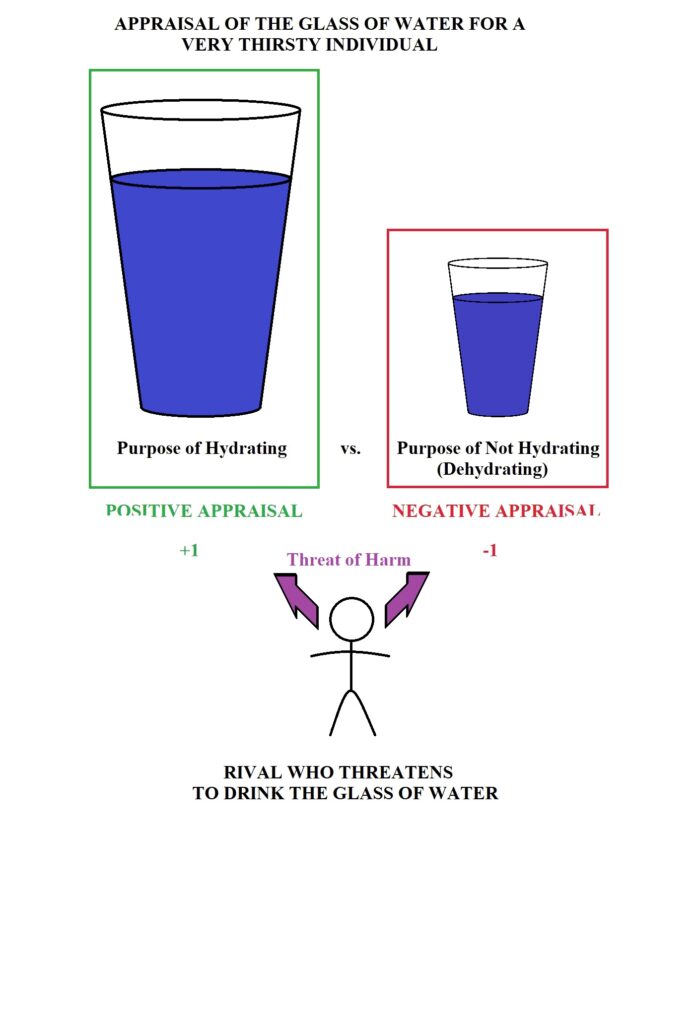
The rival threatens the same glass of water being valued for a purpose and its complementary purpose. More Positive Anxiety (LEFT) and subsequently, more negative affect, is at stake because of the Appraisal of the glass of water (i.e., the individual is thirsty, and drinking the water would lead towards homeostasis).
Alternatively, if the individual is overly hydrated (i.e., drinking the glass of water would lead away from homeostasis), then any specific threat of harm to the glass of water would reduce the Negative Anxiety invested into it for the purpose of hydrating, and lower the positive affect felt at the prospect of having extra water in their system, with respect to this single purpose of hydrating. However, if the individual expects they will be able to successfully acquire the water despite the threat of harm posed by a rival who intends to drink it first, an increase in Negative Anxiety invested into the entity for this single purpose of hydrating, as well as positive affect felt, would be modeled in the framework of Affect Engineering.
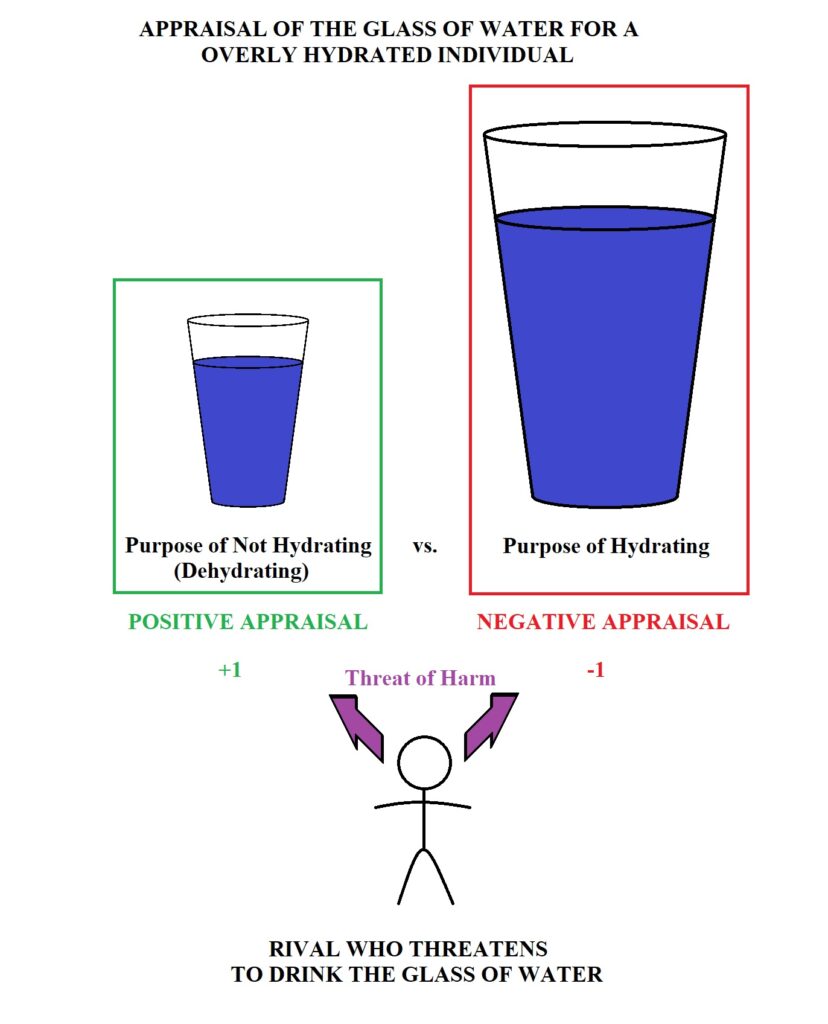
The rival threatens the same glass of water being valued for a purpose and its complementary purpose. More Negative Anxiety, and subsequently, more positive affect, is at stake because of the Appraisal of the glass of water (i.e., the individual is overly hydrated, and drinking the water would lead away from homeostasis).
It bears mentioning that in Affect Engineering’s framework, the successful fulfillment of one purpose always comes at the expense of fulfillment of the complementary purpose, and these two purposes are both mutually exclusive and exhaustive. For example, an individual cannot hydrate and dehydrate themselves at the same time, but they are always doing one or the other. For an overly hydrated individual, continuing to hydrate will normally increase the sense of urgency held for the complementary purpose, as maintaining equilibrium and homeostasis becomes jeopardized the more that one purpose is held above its opposite. This would happen if the individual intends to continue living by maintaining homeostasis, as most goals held by an individual also require the individual to be alive in order to successfully achieve them. There are exceptions to this, nonetheless.
Why are there two sets of functions in Affect Engineering?
SHORT ANSWER
Two sets of functions are needed to help model and classify emotions depending upon the Appraisal of the entity towards the restoration of equilibrium between fulfilling a purpose and fulfilling the complementary purpose or opposing goal.
IN DEPTH EXPLANATION
The Appraisal variable in Affect Engineering is used to determine which function type is used to model a valuation for an entity as it relates to the fulfillment of a purpose held by an individual. The two function types in Affect Engineering’s framework are the Pursuit of Pleasure functions, and the Avoidance of Pain functions.
Functions with a positive Appraisal in Affect Engineering concern changes to negative affect and are used when the individual determines that fulfillment of the purpose at hand would lead toward restoring equilibrium between it and its complementary purpose. These are referred to as the Avoidance of Pain Functions.
Functions with a negative Appraisal in Affect Engineering concern changes to positive affect and are used when the individual determines that fulfillment of the purpose at hand would lead away from restoring equilibrium between it and its complementary purpose. These are referred to as the Pursuit of Pleasure Functions.
There are of courses parallels and contrasts between the two functions that are worth examining based upon the classification methods for different emotions in Affect Engineering, such as between guilt and sadness, or between anger and happiness. Moreover, where equilibrium is believed to be, that is to say, what the idealized failure to success rate is between a purpose and its opposing purpose, is not assumed to be constant between individuals.
What happens when equilibrium between a purpose and its complementary purpose are not sought, and when might this occur?
SHORT ANSWER
When equilibrium between the fulfillment of a purpose and its complementary purpose is not sought, the individual is in danger of perishing if a primary drive is involved. This could occur if an individual seeks to fulfill a purpose and the successful fulfillment of the purpose can only come at the expense of the individual’s own life.
IN DEPTH EXPLANATION
An individual might choose to hold the fulfillment of one purpose above its complementary purpose, even at the risk of death, if they possess a high degree of resolve to achieve a certain aim or perform a specific action. This could happen in cases of martyrdom (i.e., sacrificing oneself for a cause), or altruistic sacrifice, as in the case of an individual putting their own life in jeopardy or even in the line of fire in order to save someone else, a group of people, or even inanimate objects.
Preview:
The next article will address emotional regulation in Affect Engineering. Though the classifications and descriptions for specific emotions have not been covered yet — they will be in the second half of this article series — the mechanisms proposed to influence them can be addressed before then.
Previous: Article 2 of 12 Reframing Anxiety as a Resource
Next: Article 4 of 12 Emotional Responses and Emotional Regulation in Affect Engineering



